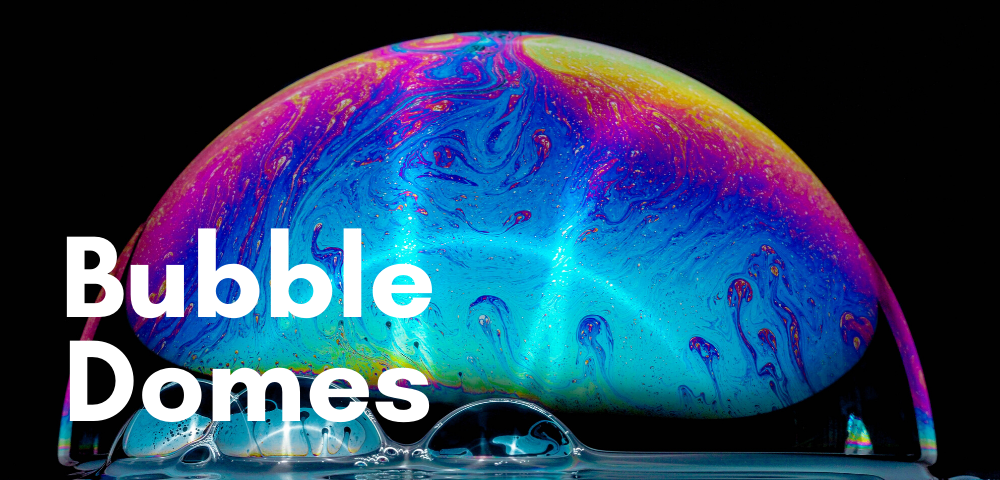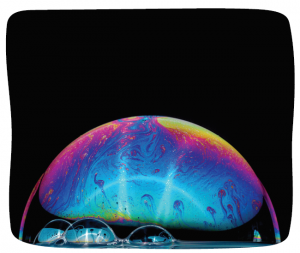
Are you missing the Bubbles exhibit? Try making your own bubbles at home! This bubble domes activity brings your bubbles to another level, helping your children learn about math and science.
SUGGESTED MATERIALS
- Straw (1 per child)
- Bubble solution (1 part dish soap to 10 parts water)
- Tray or baking sheet
- String
- Ruler
- Optional: Newspaper to catch any spills
TRY IT!
- Fill your tray or baking sheet with a thin layer of bubble solution – check that it really “bubbles.” Older children can help with this. (Does it need more soap? More water? Experiment!)
- Place one end of the straw into the thin layer of bubble solution and blow gently into the straw to create a bubble dome. Try making domes of all different sizes. Make the biggest dome possible. Now make a smaller dome inside a big dome.
- Now try the math part. Wet a piece of string in solution and carefully place it around the dome at the base. Mark the string where it meets the other end. Stretch the string out along a ruler and measure the marked-off length. This will tell you the bubble dome’s circumference.
- Make a lot of domes — what happens when domes touch each other? Are the edges still round?
- Try placing a wet fork or a rubber toy in the dome. What pops your dome? What doesn’t?

WHAT TO KNOW
- When you blow bubbles, you use soap to stretch water’s tough skin and make it super-elastic. Scientists talk about the surface tension of the water and the soap.
- Why do bubbles pop? As they get older, bubbles develop holes and their soapy film becomes thin. Some water evaporates while gravity pulls the water from the top of the bubble down to the bottom. Dryness is a bubble’s enemy – even small dust particles can pop old, thin bubbles.
- Most soapy objects pass through the bubble film without breaking it because the soap solution on the object connects to the soap solution in the bubble film.

